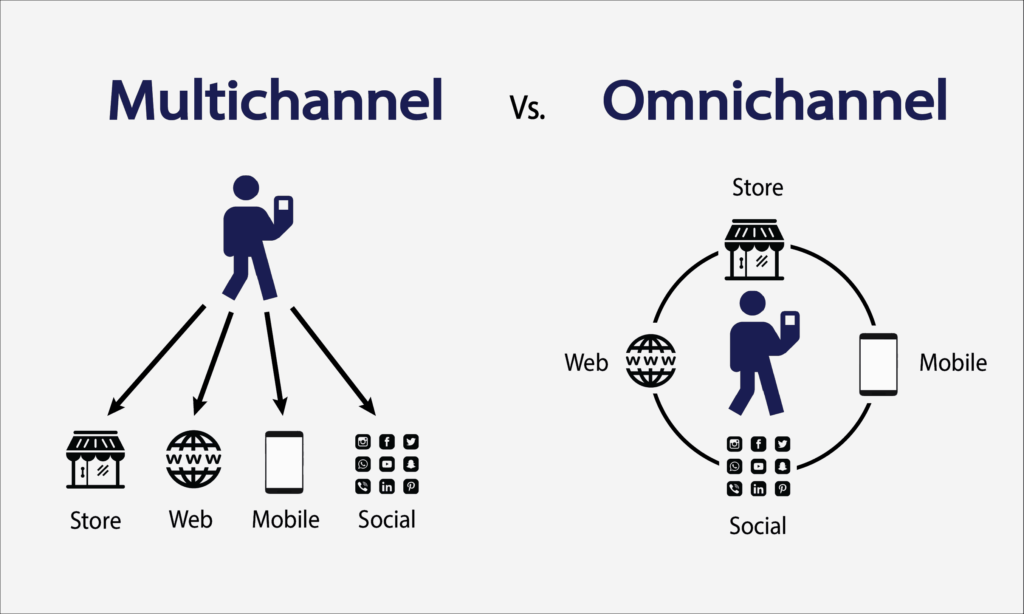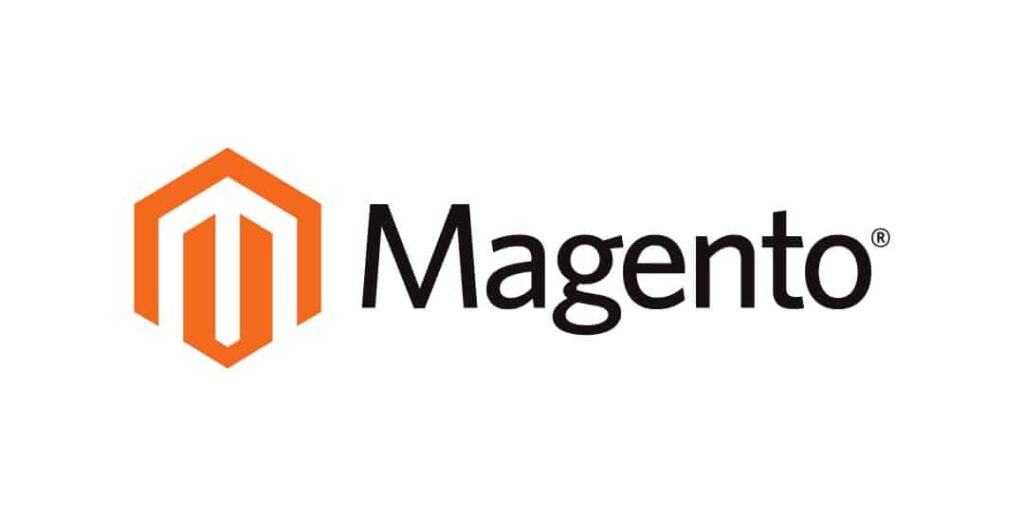Overview
What is Omnichannel experience?
Omnichannel experience is build from multiple touchpoints of customers at multiple channels, which are considered as marketing assets, ecommerce websites, and physical stores. These touchpoints contribute to the behaviors of purchasing from customers, in order to bring convenience and more value to customers. Omnichannel experience is managed and stored in database connected with ecommerce websites, point of sale system, and warehouse. The following example would help to describe the basic case of omnichannel experience:
- 1st touchpoint: A customer see your advertising on facebook, and click to go to your website
- 2nd touchpoint: The customer visit website and browse to see products, he finds a T-shirt that he wants to buy, he creates an account and add the item to his cart
- 3rd touchpoint: The customer comes to your local store to try the T-shirt with different colors, but the color that he wants is sold out, so he orders the item to be shipped from your warehouse or another physical store to his house
- 4th touchpoint: The customer goes home and the T-shirt is shipped to him from your warehouse, he check the item and pay
- 5th touchpoint: The customer check his account on your website, his cart give notification that the order is fulfilled successfully, and he receives a coupon of 10% discount for the next purchase
This example shows how a customer goes throw a complete omnichannel experience with the contribution of website, local store, and warehouse. All information about the customer and the order are synchronized, thanks to many omnichannel solutions, between all channels and displayed to customer to notice him how he is serving. Omnichannel experience would help to avoid cart abandonment, lossed deals because of problems like out of stock, and it also improve customer services, customer engagements, and brand reputation.
Omnichannel Ecommerce vs Multi-channel Ecommerce

If you are still wondering about what is truly omnichannel experience, let’s take a look on how different between Omnichannel Ecommerce and Multi-channel Ecommerce.
Multi-channel Ecommerce is still more familiar with merchants and consumers. All selling channels in multi-channel ecommerce such as websites or stores would have their own stocks. It means consumers can buy at any channel in the system as they want but they would be served separately by each channel. Website only records behaviors of online visitors, point of sale only records the volume of a single store, and the database is not synchronized between channels. There would be multiple marketing channels to bring consumers to the decision of purchasing, but the selling process is conducted at a single point of sale. In multi-channel ecommerce, a physical store cannot ship items from other stores or direct from warehouse, items from website cannot be returned in-store. The interactions cross-channel in selling and buying are hard to be operated in multi-channel ecommerce, so consumers need to stick with the channel that they are familiar with.
Due to the rise of mobile devices and delivery services, consumers demand the more convenient ways to interact with brands. They want their memberships are recorded when they buy via any point of sale, their purchases via mobile apps can be returned at the nearest stores, or they can buy the out-of-stock products from other stores or directly from warehouse. Therefore, omnichannel solutions are developed to execute and manage these interactions. And then, Omnichannel Ecommerce is born and it brings consumers the complete shopping experience with flexible interactions between selling channels. The key difference between omnichannel ecommerce and multi-channel ecommerce is that omnichannel experience combines all touchpoints together. Consumers are allowed to take any journey through multiple channels, the experience is consistent and unified. That’s why omnichannel ecommerce would becomes the future of retail industry.
The best omnichannel platforms: Magento, Shopify, and BigCommerce
Magento – The most powerful omni channel platform

Magento is the most popular omnichannel platform with 30% market share for ecommerce websites. Merchants can build the complete omnichannel experience on Magento by plenty of third-party softwares and extensions, which support point of sale, inventory management, order fulfillment, loyalty program, CRM, etc. Magento is suitable for big merchants who have high budget to build a stable ecommerce website to process huge database from different kinds of product and many stores.
Shopify – Lean and flexible omni channel platform

Shopify is suitable for small and medium merchants who need an easy to use ecommerce website and flexible capacity. The remarkable advantages of Shopify is fast loading speed and optimized UI/UX designs, which are crucial to provide good omnichannel experience. Shopify is not an open source ecommerce CMS like other omnichannel platform, it is a PaaS solution with monthly paid subscriptions. Therefore Shopify is not a good choice for international brands who want to custom the platform and manage all data on their own servers.
►►►► Please visit our products: digital banking, situation analysis, Shopify markets, Vietnam Photography Tour, Photography Tour Guide Viet Nam, supply chain operations management, fintech ai, Multi Store POS, Woocommerce POS, Mobile POS, White label POS, POS Reseller, Beauty Supply Store POS, Retail POS and Vape shop POS
BigCommerce – Feature-rich and easy to use

Another famous omnichannel platform is BigCommerce. The platform allows merchants to start their online stores in minutes. BigCommerce is easy to use with many options for customization and integrations, even when its default features can help to provide basic omnichannel experience. Because of the flexibility and functionality of BigCommerce, both big brands and entrepreneurs can use this platform to build ecommerce websites.
Omnichannel solutions: Point of sale, Inventory, and Order Fulfillment
ConnectPOS – The most reliable point of sale system
ConnectPOS provides all features needed for a point of sale system with amazingly smooth and stable operation, when almost other pos solutions are slowdown or crashing if they have to process high-volume traffic suddenly. Therefore, ConnectPOS is trusted and helping to build omnichannel experience for more than 3000 merchants worldwide. This omnichannel solution integrates easily with plenty of payment gateways, third-party extensions and software such like inventory, loyalty program, reward point, gift card, facial recognition, etc.
Boostmyshop Inventory – Magento stock management package
Boostmyshop Inventory is a famous omnichannel solution package for stock management. The package has full features for ERP, barcode management, alias, product organizing, UPS label, etc. In addition, real time data reports and integration with transporter software will save time and increase accuracy in decision making.
Magestore Order Fulfillment – Manage and fulfill order with ease
Order fulfillment could be much more complicated in maintaining omnichannel experience, in comparison with multi-channel ecommerce, and Magestore Order Fulfillment extension would be an optimal choice for order processing. This omnichannel solution supports multi-store and multi-warehouse, with 5 standard steps: Verify – Fulfill – Pick – Pack – Ship. It also integrate easily with software from shipping services or other third-party solutions.
